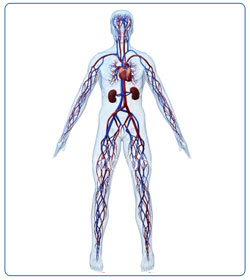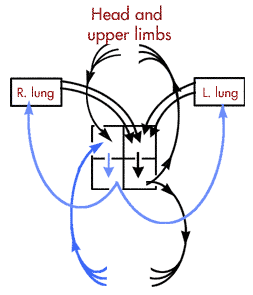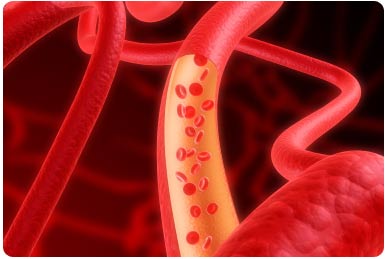India’s health care system is characterized by a mixed ownership pattern. To
compound this plurality of provision, there are different systems of medicine-
Allopathy, Ayurveda, Unani, Siddha and Homeopathy. There are three major
groups in the provision of health care and consumption of health resources in
the country. These are the public sector, private health sector and thirdly the
households who utilize the health service constitute the largest constituent who
spend on health care.
The public health sector consists of the central government, state government,
municipal & local level bodies. Health is a state subject and therefore the
primary responsibility of providing health services vests with the concerned
state government. However the central government does contribute in a
substantial manner through grants and centrally sponsored health programs.
There are other ministries and departments of the government such as
defence, railways, police, ports, mines etc. who have their own health
services/schemes and institutions that provide care for their own personnel. For
the organised sector employees (public & private) provision for health services
is through the Employee’s State Insurance Scheme (ESIS). The private health
sector consists of the 'not-for-profit' and the 'for-profit' health sectors. The notfor-
profit health sector includes various health services provided by non
government organisations (NGO’s), charitable institutions, missions, trusts, etc.
Health care in the for profit health sector is provided by various types of
practitioners and institutions. The practitioners range from General Practitioners
(GPs) to the super specialists, various types of Consultants, Nurses and
Paramedics, Licentiates, Registered/Rural Medical Practitioners (RMPs) and a
variety of unqualified persons (quacks). The practitioners not having any formal
qualifications constitute the 'informal' sector and it consists of tantriks, faith
healers, bhagats, hakims, vaidyas and priests who also provide health care.
The institutions falling in the private health sector range from single bed nursing
homes to large corporate hospitals, and medical centres, medical colleges,
training centres, dispensaries, clinics, polyclinics, physiotherapy and diagnostic
centres, blood banks, etc. In addition to these, the private health sector includes
the pharmaceutical and medical equipment industries which are predominantly
multinational.
Studies on utilisation and household health expenditures reveal that 50
percent of people seeking indoor care and around 60 to 70 per cent of those
seeking ambulatory care (or out-patient care) go to private health facilities in
the country. The private health sector comprises of the ‘not-for-profit’ and the
‘for-profit’ health sectors. Despite their considerable presence in the country,
information about the role, nature, structure, functioning, type and quality of
care of private hospitals remains grossly inadequate. Quality of care provided
by the private and public health care services in India is questionable. There
are very few systems for quality assurance in India. Majority of the population
utilises the services of the formal health sector but have no control on the
quality. Also, regulations and accountability are too far and few in between.
Quality has been on a low priority until recently.
Licensing
Until recently, only few states had legislations for private hospitals. Presently
many states are in the process of enacting suitable legislations. (Annexure 1).
In the states that have legislation the implementation has been found to be
lacking. In Mumbai a Public Interest Litigation was filed and in response the
Chief Justice of the Bombay High Court in 1991 issued a order to the Bombay
Municipal Corporation to set up a permanent committee to oversee and
supervise the implementation of the Bombay Nursing Home Registration Act
1949, and make necessary recommendations.
In addition there was an impetus to licensing of private hospitals due to the
recognition that they were providing the major care and were not accountable
and most important we did not even have sufficient information. Due to this
many states in the post nineties started enacting legislation for private
hospitals and nursing homes. The MOH&FW along with the Medical council
of India also took the initiative and held a national workshop on Determination
of Minimum Standards for Private Hospitals & Nursing Homes in New Delhi on
18th & 19th Aug. 1999. These workshop brought out certain minimum standards
to be followed by private hospitals and nursing homes. This meeting was
followed by a meeting of health secretaries concerning the status of enacting
and implementation of the legislation for private hospitals and nursing homes. (I
do not have the dates).
There are various issues related to licensing of health care providers, firstly
there are too many laws and the implementation is poor, outdated legislations
in some cases, many laws enacted by the central government but not enacted
by state governments. There is absence of regulation in some aspects &
states, e.g. there are no legislations covering laboratories and diagnostic
centers and other health centers. In many aspects legislation regarding price,
distribution is not covered. Cross practice very common. Further there is
opposition of the medical profession to accountability, in many states the acts
have been challenged in the courts of law and stay orders taken for not
implementing the act. In the legislations there is a need for standards of
medical practice. Further it needs to be mentioned that llicensing is a state
function, which sets a minimum standard of compliance.
Accreditation
In the context of the above it was necessary to examine other avenues of
making the private hospitals accountable and provide good quality of care.
One needs to evolve a partnership and provide a platform based on the
principles of sharing and transparency with the primary aim of providing
quality care to the patients. One of the methods that were envisaged was an
accreditation system for hospitals.
In India, the issue of accreditation of hospitals has been taken up seriously.
There are various initiatives being undertaken at the local and national level.
In the past, the Indian Hospital Association (IHA) at Bombay had made efforts
to promote an accreditation system. The response to the scheme was
lukewarm as it did not involve the various stakeholders in evolving the
accreditation system and tried to impose pre- determined issues of standards,
membership fees and assessment mechanism and so on.
In this context group of individuals have been involved and doing considerable
amount of work related to regulation, legislation, quality of care among other
related areas. There were various studies carried out in the nineties that
examined the quality of care, regulation, quality systems, etc. The findings of
the studies motivated us to undertake more work on the subject. We realised
that bureaucratic way of imposing laws from above without creating support
from below for improving quality and efficiency was not working. As the World
Development Report 1993 suggests “health system reforms should be
designed in ways that minimise the need for direct government regulation.
Encouraging self-regulation through association of private medical schools,
doctors, and hospitals could be one such approach”.
Thus, in 1997, with the support of World Health Organisation (WHO), Geneva,
a study titled, "Self Regulation of Private Hospitals and Nursing Homes in
Mumbai City: Need for an Accreditation System? was undertaken. The overall
objectives of the study were assess the need, views and willingness of
various stakeholders to participate in an accreditation system and evolve a
framework for an accreditation system for private hospitals and nursing
homes in Mumbai. The study incorporated a methodology, which involved
various stakeholders of health care services to collaborate and participate
from the initial stages in understanding and evolving an accreditation system.
The constituents include hospital and nursing home owners, their
associations, specialists associations, government, consumer organisations,
insurance companies, financial institutions, etc. (copy of the study is
enclosed).
The findings of the study and response of the participants at the two workshop
(National and Mumbai level) was very positive. Many of the participants felt
that concrete steps should be taken towards its formation. After much
discussion, it was decided that committee should be formed with
representatives from various stakeholders. This committee was formed and is
presently named "Health Care Accreditation Council" and meets at periodic
intervals. The committee found it essential to formulate a concrete plan of
action in order to gradually and co-operatively evolve an accreditation system
for hospitals in Mumbai. Presently, the group has evolved standards for the
wards, labour room, operation theatre, essential drugs, waiting area or
reception room, consulting room, changing room, pantry, medical records and
waste management for smaller hospitals. Further, the accreditation body is in
the process of being registered under section 25A of the companies act in
Mumbai city and hope to begin work in the next couple of months.
At the national level the Ministry of Health and Family Welfare, Government of
India has constituted a National Panel to map out a course for the
development of a quality improvement in health care in India. The panel’s
work would form the basis for national and state councils on quality in health
care. The objectives are to define a plan for developing accreditation for
hospitals in India and make recommendations for other institutional
mechanisms (existing or newly proposed) to facilitate quality management in
organisations (in addition to accreditation). Activities to be considered are
licensing, regulations and enforcement, technical and consumer information
dissemination, management of technical competencies, technical and
financial support for updating standards; and certification schemes. The
National Panel comprises of 16 selected persons of eminence from all over
India. It would develop national guidelines, procedures, and standards for
hospital accreditation. It would have sub-panels that would review existing
information and practices in India and internationally, gather opinions from key
opinion-leaders. There are four sub panels constituted namely Organizational
Options for Quality Assurance, Clinical Standards, Quality Systems, and
Physical Standards. Each of the sub panels has got its own specific terms of
reference. The details are given below.
Sub Panel I - Organizational Options for Quality Assurance
Convenor: CEHAT - (Shri Sunil Nandraj)
review system of accreditation in other sectors
review existing system of licensing health facilities and practitioners; and
suggest different options for improvements inter-alia incorporating systems of
renewal, periodic peer review etc., including organizational arrangement, roles
and responsibilities for implementing the suggested systems of licensing and
accreditation;
Sub Group II - Clinical Standards
Convenors: AIIMS (Dr. Kameshwar Prasad)
review existing clinical standards for basic medical, paediatric, surgical,
trauma, psychiatric and obstetric care that can be used in the context of
accreditation;
suggest locally relevant standards in these areas; and
offer different options to develop and sustain skills needed to deliver clinical
standards including basic training, competency certification and continuing
education
Sub Group III - Quality Systems
Convenor: Dr. Raman Kutty (HAP)
The sub group will propose standards for quality systems guidelines or
protocols in the following areas:
Quality assurance manuals (hospital policies and operational procedures for
maintaining quality)
Clinical outcomes and utilization review
Medical record-keeping and information management
Medical audits
Procedures to protect patient confidentiality
Public complaint procedures
Patient satisfaction monitoring
Adverse events monitoring
Indicator development
Sub Group IV - Physical Standards
Convenor : Shri Chitra, Trivandrum
review existing norms and suggest locally relevant standards and protocols
for support services including manpower requirements for quality assurance in
hospitals and other aspects related to:
safety requirements both for staff and patients;
healthcare waste management and disposal systems;
equipment maintenance, servicing, calibration and reliability &
auxiliary services such as laundry, ambulance, sterilization systems, physical
environment and sanitation.
The WB was supporting the above work financially and the work has been
completed. I understand that there was a meeting held at the MOH to discuss
the above.
The above note just touches upon some of the initiatives undertaken in India
related to accreditation.
Note prepared by
Sunil Nandraj
NPO (EIP
WHO India Country office
New Delhi







